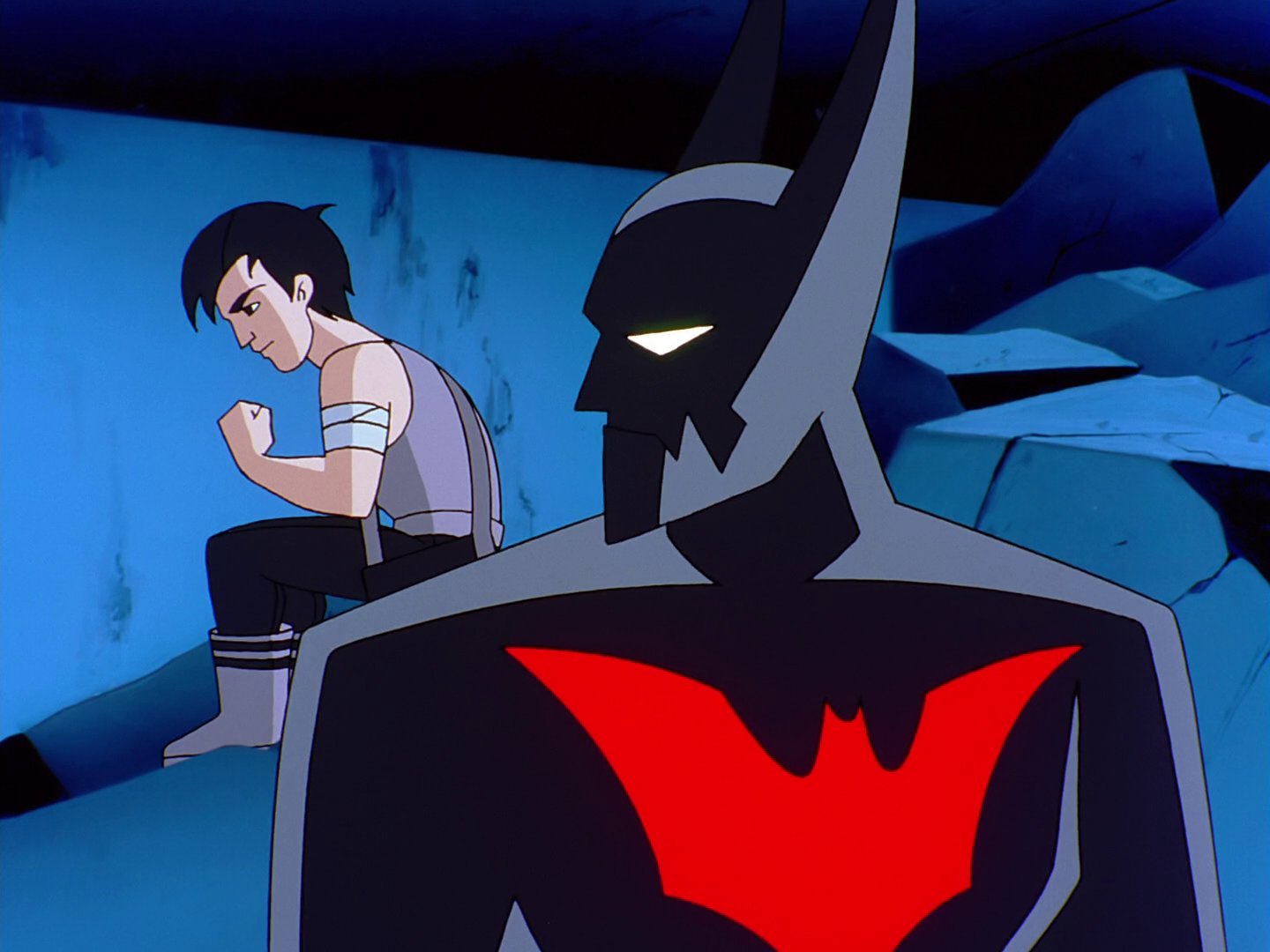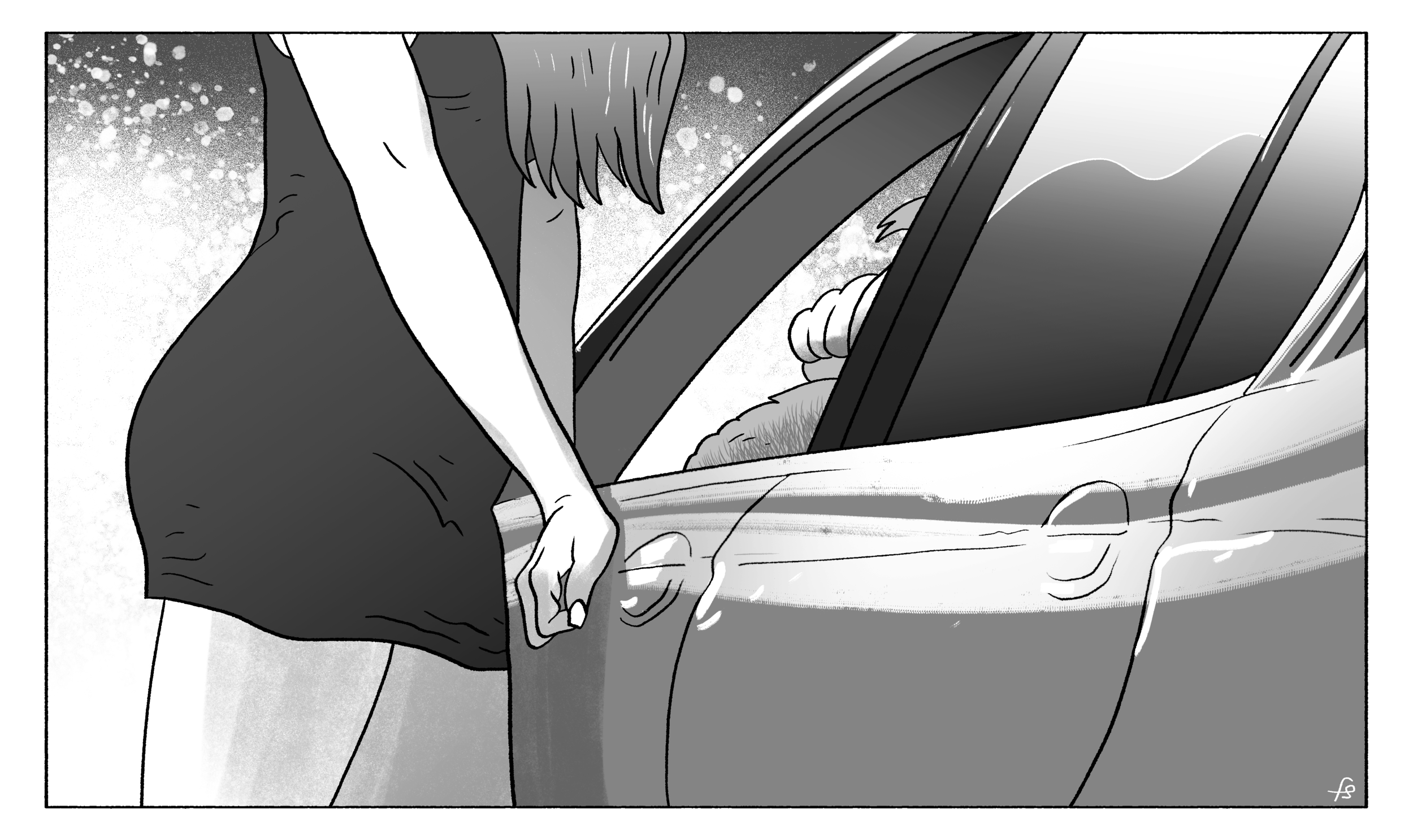Control Nathan Rabin 4.0 #257 Batman Beyond: "Payback" and "Where's Terry?"
Welcome, friends, to the latest entry in Control Nathan Rabin 4.0. It’s the career and site-sustaining column that gives YOU, the kindly, Christ-like, unbelievably sexy Nathan Rabin’s Happy Place patron, an opportunity to choose a movie that I must watch, and then write about, in exchange for a one-time, one hundred dollar pledge to the site’s Patreon account. The price goes down to seventy-five dollars for all subsequent choices.
Or you can be like four kind patrons and use this column to commission a series of pieces about a filmmaker, actor or television show. I’m deep into a project on the films of the late, great, fervently mourned David Bowie and I have now watched and written about every movie Sam Peckinpah made over the course of his tumultuous, wildly melodramatic psychodrama of a life and career. That’s also true of the motion pictures and television projects of the late Tawny Kitaen.
A generous patron is now paying me to watch and write about the cult animated show Batman Beyond and I just finished a look at the complete filmography of troubled former Noxzema pitch-woman Rebecca Gayheart. Oh, and I’m delving deep into the filmographies of Oliver Stone and Virginia Madsen for you beautiful people as well.
Batman Beyond does justice to the deep-seated trauma at the center of its dark universe both dramatically and comedically, as a pervasive motif as well as a source of dark humor. Trauma is, after all, at the core of the complicated, nuanced and multi-dimensional relationship between Bruce Wayne and his teen protege Terry McGinnis.
Both Bruce and Terry know what it’s like to lose a father to violent crime. They are all too aware that it leaves a massive hole that can never be filled. Trauma is a constant subtext for Batman Beyond but it becomes text in “Payback”, an episode that finds Terry in group therapy, ostensibly for crime-fighting purposes but also because, as someone wrestling with untreated, undiagnosed PTSD and Depression, he needs it.
“Payback” centers on the Gotham Youth Counseling Center, a safe, supportive place for troubled youth to talk through their problems and teen angst with other kids under the benevolent direction of Dr. Stanton (Mitch Pileggi, best known as the title character in Wes Craven’s Shocker).
When adults connected to the children who frequent the Gotham Youth Counseling Center end up getting assaulted by a masked, electric whip-wielding vigilante who calls himself Payback, Terry goes undercover as a young man desperately in need of therapy and kindness.
As a bonus, Terry gets some legitimate help in dealing with his intense and psychologically draining relationship with his boss/mentor/surrogate father figure Bruce Wayne. In a delightful bit of understatement, Dr. Stanton tells Terry that Bruce really respects him but has a hard time expressing those feelings, possibly due to “maybe some trauma in the past.”
Bruce isn’t just forced to wrestle with “some” trauma: he pretty much has ALL of the trauma, though Terry has plenty of trauma in his own life as well.
Both “Payback” and the following episode, “Where’s Terry?” have lines that speak volumes about who these characters are on an existential level and how they see the world.
There’s a wonderful moment, for example, when Payback tries to frighten what he sees as a feeble, harmless old man by bragging that he’s his worst nightmare.
With just the right note of angry defiance, Bruce yells, “You have no idea what my nightmares are like!”
It’s brutally, darkly funny because it’s true. No one knows the depression and darkness that Bruce deals with on a daily basis, and has since his parents were brutally murdered, with the notable exception of Terry. That’s a central component of their bond: they share the identity of Batman but also the heartbreak, trauma and loss that goes into becoming The Dark Knight.
From the very beginning, there’s something clearly wrong with Payback, beyond, of course, his need to put on a ridiculous costume and avenge the personal and professional resentments of troubled teenagers.
NOBODY cares about troubled teenagers. Not even troubled teenagers. I should know! I was a troubled teenager and all I cared about was masturbation, movies, music and TV. So it seems deeply suspicious that someone has taken it upon themselves to get revenge on people who mistreat kids, whether in the form of abusive parents, shitty bosses or two-timing partners.
Payback sees himself as Terry’s peer and ally but Terry thinks he’s bonkers. True, Terry also wears an elaborate costume to fight crime but he goes about it the right way, whereas Payback is just another lunatic in a crazy get-up who thinks he’s a hero.
Terry and Bruce suspect that Payback might be Dr. Stanton or his hulking sidekick Howard Lewis. They learn otherwise when Payback is climatically unmasked and the vigilante’s secret identity is revealed to be Dr. Stanton’s son Kenny, a mere child.
Only someone with the emotional maturity of a mere lad would be that invested in the lives and emotions of teenagers.
A child figures prominently in the next episode, “Where’s Terry?” as well but because this is Batman Beyond, he’s dark as fuck, extremely well-written and damn near unforgettable.
The episode begins with Terry spotting Ollie, a flunky of his old nemesis Shriek, and following him. Shriek, who has taken up residence in an underground hideout, tries to kill his enemy with a sonic blast but only ends up knocking him unconscious due to a cave-in.
When Terry wakes up, he finds that he is in the company of a runaway child named Dak, a name Terry quips sounds more like a throat lozenge.
Dak tells Terry that half of his class wants to be him. That answers the question of whether or not Terry/Batman is famous in this iteration of the character. He clearly is. Otherwise small children wouldn’t know who he is, let alone emulate him.
Dak, however, does not belong to this group. He tells Terry that he instead looks up to villains like The Royal Flush Gang who do what they want and don’t care about following the laws of God and man.
This made me laugh because in my mind, no one wants to be The Royal Flush Gang, including the Royal Flush Gang. They are, after all, doofuses who dress up like playing cards in order to do crime but Dax would rather be a half-assed criminal with a lame gimmick than a crime-fighter like Terry.
Bruce, meanwhile, ends up meeting Terry’s sidekick Max for the first time as they try to locate their lost friend before harm befalls him.
Terry ends up winning the obnoxious brat’s sympathies through his heroism and selflessness and Bruce comes to appreciate what Max brings to the team.
There’s only one episode left in the show’s second season, and one season left after that but Batman Beyond shows no sign of creative fatigue or exhaustion. It’s a bummer that Batman Beyond never made it past a third season and weirdly hasn’t been rebooted yet but the upside to the cult show’s relatively brief run is that it never even began to wear out its welcome.
Buy copies of The Joy of Trash, The Weird Accordion to Al: Ridiculously Self-Indulgent, Ill-Advised Vanity Edition (only 19.50, shipping, handling and taxes included) in both paperback and hardcover and The Weird A-Coloring to Al and The Weird A-Coloring to Al: Colored-In Special Edition signed from me personally (recommended) over at https://www.nathanrabin.com/shop
Or you can buy The Joy of Trash here and The Weird A-Coloring to Al here and The Weird Accordion to Al here
AND of course you can also pledge to this site and help keep the lights on at https://www.patreon.com/nathanrabinshappyplace
Buying my books and pledging to my website is how I stay in business in an absolutely brutal environment, so every last dollar is supremely appreciated.









